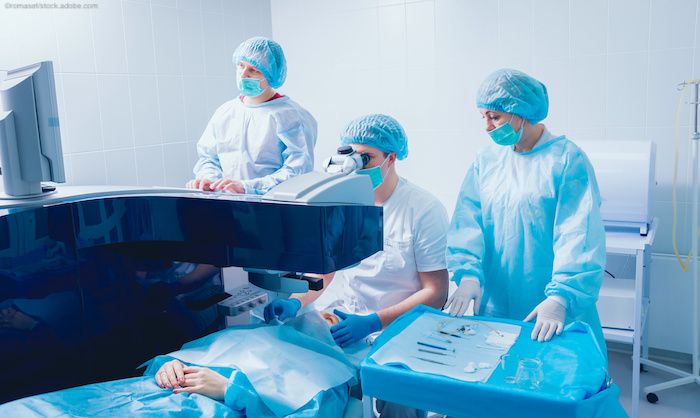Article
AAO 2019: Newer options optimize pharmaceutical management for lens surgery patients
Author(s):
According to William D. Trattler, MD, surgeons today can choose from a number of newer modalities that address the drawbacks associated with previous options.

In an ideal world, patients could undergo lens surgery without needing to use medications for maintaining intraoperative mydriasis or controlling pain, inflammation, and infection risk. The reality is different, but surgeons today can choose from a number of newer modalities that address the drawbacks associated with previous options, said William D. Trattler, MD.
Speaking at the American Academy of Ophthalmology 2019 Refractive Surgery Subspecialty Day, Dr. Trattler described the challenges accompanying some postoperative medications and provided an overview of more recent innovations to help surgeons sort out the growing number of choices for perioperative medication regimens.
“There is no one best protocol, and we may all be using something different,” said Dr. Trattler, who specializes in refractive, corneal, and cataract surgery at the Center For Excellence In Eye Care, Miami, FL. “The good news is that there are many great options, we are doing a great job for our patients, and we can expect that our choices will continue to evolve.”
Challenges
Challenges accompanying topical medications include poor patient compliance and the potential for ocular surface toxicity associated with some generic anti-inflammatory medications. Newer topical pharmaceutical options for inflammation control, including novel topical corticosteroids, target these concerns by incorporating advanced formulations that are more ocular surface friendly and allow for less frequent daily dosing. Intracameral corticosteroid administration during surgery represents another alternative to topical medications.
In the past surgeons have injected triamcinolone, but when placed into the anterior chamber, the cloudy suspension causes a “snowglobe” effect on vision. Injection through the zonules does not avoid the vision effect and is more likely to cause increased IOP, Dr. Trattler said.
The snow globe effect can be avoided with the off-label use of dexamethasone, which is a clear formulation. Now, however, surgeons can choose an FDA-approved intracameral dexamethasone product that is placed behind the iris at the end of surge (yDexycu, EyePoint Pharmaceuticals).
Using extended-release technology (Verisome) that releases dexamethasone for approximately 30 days, the product is designed to provide durable postoperative inflammation control. Another surgeon-placed dexamethasone product intended for intracanalicular insertion (Dextenza, Ocular Therapeutix) also releases medication over 30 days.
The product is a 3 mm cylindrical-shaped, resorbable, sterile insert placed into the lower lacrimal punctum. The insert is fluorescent, which allows confirmation of its presence in the punctum. Intracameral administration using the approved fixed combination of phenylephrine/ketorolac 1%/0.3% (Omidria, Omeros) placed into the irrigating solution is another newer medication management option.
Although the preservative- and bisulfite-free product is approved for preventing intraoperative miosis and reducing postoperative pain, Dr. Trattler suggested that the intraoperative bolus of nonsteroidal anti-inflammatory drug it delivers is also helpful for suppressing inflammation.
Endophthalmitis prophylaxis
An abundance of evidence demonstrates the efficacy of intracameral antibiotics for reducing the risk of postcataract surgery endophthalmitis. In the United States, however, there is no commercially available antibiotic approved for intracameral use. Dr. Trattler noted that with the use of compounded medications, there is a risk for sight-threatening toxic anterior segment syndrome.
In the interest of minimizing that risk, Dr. Trattler said he is obtaining antibiotics for intracameral administration from a 503B compounding pharmacy that are held to higher regulatory standards for quality control. He added, “Some surgeons in the US recommend using a consent form when using a compounded medication considering the risks and chance of a compounding error.”
Disclosures:
William D. Trattler, MD
Dr. Trattler is a consultant to EyePoint, Omeros, Ocular Therapeutix, and other companies that provide medications used perioperatively for cataract and refractive lens surgery.





